#women hijab
Text

26 notes
·
View notes
Text
Rayon Hijabs vs. Other Fabrics: Why Rayon is Ideal for Summer
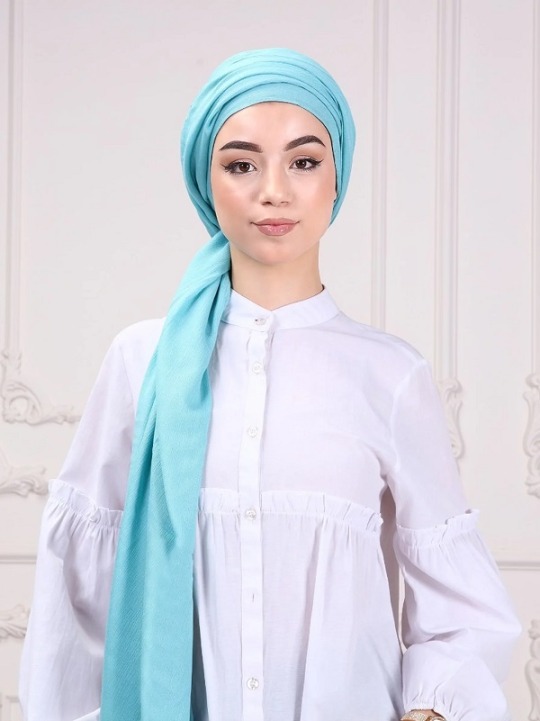
Introduction
When it comes to choosing the perfect hijab for the summer season, it's essential to consider the fabric's comfort, breathability, and overall performance. Among various options available, rayon hijabs stand out as an excellent choice for women seeking both style and comfort during the warm summer months. This article will explore the benefits of rayon fabric and why it surpasses other materials when it comes to summer hijab wear. So, let's delve into the reasons why rayon hijabs are ideal for summer!
The Breathability of Rayon Fabric
Rayon is a highly breathable fabric, making it an excellent choice for hijabs in summer. Unlike synthetic materials that tend to trap heat and moisture, rayon allows air to circulate freely, keeping you cool and comfortable even on the hottest days. The breathable nature of rayon helps to prevent excessive sweating, ensuring that you stay fresh and confident throughout the day.
Lightweight and Soft Texture
One of the key advantages of rayon hijabs is their lightweight and soft texture. Rayon fabric is known for its smooth and silky feel, which adds a touch of elegance to your attire. Its lightweight nature makes it easy to drape and style, providing a graceful appearance while ensuring you don't feel weighed down by heavy fabric in the summer heat.
Superior Moisture Absorption
Summer heat often leads to perspiration, and it's crucial to choose a hijab fabric that can absorb moisture effectively. Rayon excels in this aspect, as it has excellent moisture-wicking properties. It swiftly absorbs any sweat, leaving your skin dry and comfortable. This feature helps prevent odors and keeps you feeling fresh throughout the day.
UV Protection
Protecting your skin from harmful UV rays is essential, especially during the summer when the sun is at its strongest. Rayon fabric offers inherent UV protection, shielding your skin from the sun's harmful rays. While it's still advisable to wear sunscreen for maximum protection, a rayon hijab provides an additional layer of defense for your face and neck.
Versatility and Style
Rayon hijabs come in a wide range of colors, patterns, and designs, allowing you to express your personal style and complement various outfits. Whether you prefer vibrant prints, subtle tones, or solid colors, rayon offers versatility and endless styling possibilities. It drapes beautifully and can be effortlessly styled in numerous ways, giving you the freedom to create unique looks every day.
Durability and Longevity
These women's hijabs are not only stylish but also durable. Despite their lightweight and delicate appearance, rayon fabrics are known for their strength and longevity. They can withstand regular wear and washing without losing their shape or color, making them a reliable choice for long-term use. Investing in a high-quality rayon hijab ensures that you can enjoy its beauty and comfort for seasons to come.
How to Care for Rayon Hijabs
To keep your rayon hijabs in excellent condition, proper care is essential. Here are a few tips for maintaining their quality:
Handwashing: It is recommended to hand wash your rayon hijabs using a gentle detergent and cold water. Avoid using harsh chemicals or bleach that can damage the fabric.
Air Drying: After washing, gently squeeze out excess water and lay the hijabs flat to air dry. Avoid wringing or twisting the fabric, as it can cause wrinkles or stretching.
Ironing: If necessary, use a low-temperature iron to remove any wrinkles. Ensure that the iron is set to the rayon setting to prevent heat damage.
Storage: Store your rayon hijabs in a cool, dry place away from direct sunlight to maintain their color and prevent any potential damage.
By following these care instructions, you can extend the lifespan of your rayon hijabs and keep them looking vibrant and beautiful.
The Importance of Choosing the Right Fabric
Selecting the right fabric for your hijab is crucial, as it directly impacts your comfort and overall experience. Rayon offers numerous benefits that make it an ideal choice for summer hijabs. Its breathability, lightweight nature, moisture-wicking properties, and UV protection contribute to a pleasant and enjoyable wearing experience, even in hot weather.
Rayon Hijabs vs. Other Fabrics: A Comparison
Let's compare rayon hijabs with other commonly used fabrics for hijabs to understand why rayon stands out as the preferred choice for summer:
Cotton Hijabs
Cotton hijabs are popular for their softness and breathability. While they are comfortable to wear, cotton fabrics tend to absorb moisture and retain it, which can leave you feeling damp and uncomfortable during hot summer days. In contrast, rayon hijabs excel in moisture absorption and breathability, keeping you cool and dry.
Polyester Hijabs
Polyester hijabs are known for their durability and wrinkle-resistant properties. However, they lack the breathability and moisture-wicking abilities of rayon. Polyester fabrics can feel hot and stifling, making them less suitable for summer wear compared to the lightweight and breathable rayon hijabs.
Silk Hijabs
Silk hijabs are luxurious and offer a beautiful drape. While silk is breathable, it can be expensive and delicate to maintain. Rayon hijabs provide a more affordable alternative with similar softness, breathability, and versatility. They are also easier to care for and retain their quality over time.
Conclusion
In conclusion, rayon hijabs prove to be an ideal choice for summer wear. Their breathability, lightweight nature, superior moisture absorption, UV protection, versatility, and durability make them highly desirable for women seeking comfort and style. Whether you're attending a formal event, engaging in physical activities, or simply going about your daily routine, rayon hijabs offer the perfect balance of functionality and fashion.
By carefully selecting the fabric for your hijab, such as rayon, you can enhance your overall experience and ensure comfort during the summer season. So, embrace the beauty and practicality of rayon hijabs and enjoy a stylish and pleasant summer!
0 notes
Text

As of now telegram, Twitter, tumblr, Instagram, Facebook, Reddit and soon enough whatsapp are blocked in here; that means no social media whatsoever
The VPNs we use are failing one after the other; And the internet speed is gradually getting less and less and less
Once they cut us off the massacre will begin
Please share
#pls share#mahsa amini#women movement of iran#iran protests#iran protest#iran#forced hijab#oppression#I forgot to mention that even Pinterest is out
26K notes
·
View notes
Video
October 3, 2022 - Protesting Iranian schoolgirls kick their pro-government school director out of their schoolgrounds. Students across Iran have been occupying their schools in protest after the death of Jina Mahsa Amini. [video]

#iran#students#student protest#women's rights#feminism#religious freedom#women#2022#jina mahsa amini#mahsa amini#middle finger#hijab#video
18K notes
·
View notes
Text
it's "women's rights!" until a muslim woman walks in
it's "women can wear what they want!" until a muslim woman walks in
it's "her body, her choice!" until a muslim woman walks in
691 notes
·
View notes
Text

Another based TikTok woman being 100% right about religion, love the tendency ✊
#radfem#radical feminism#radfem safe#radfems do interact#radblr#feminism#radfems do touch#women's rights#women's liberation#religion#anti religion#anti islam#anti muslim#anti hijab#islam opresses women#islam hates women#anti christianity#abrahamic religions#christianity#islam#muslim#hijab#hijabi#women's oppression#abolish religion#abolish islam#religious#holy book#quran#bible
4K notes
·
View notes
Text
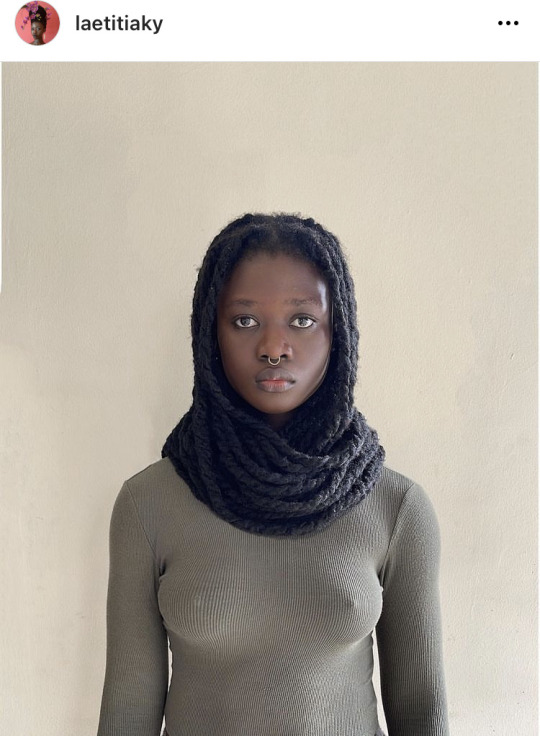
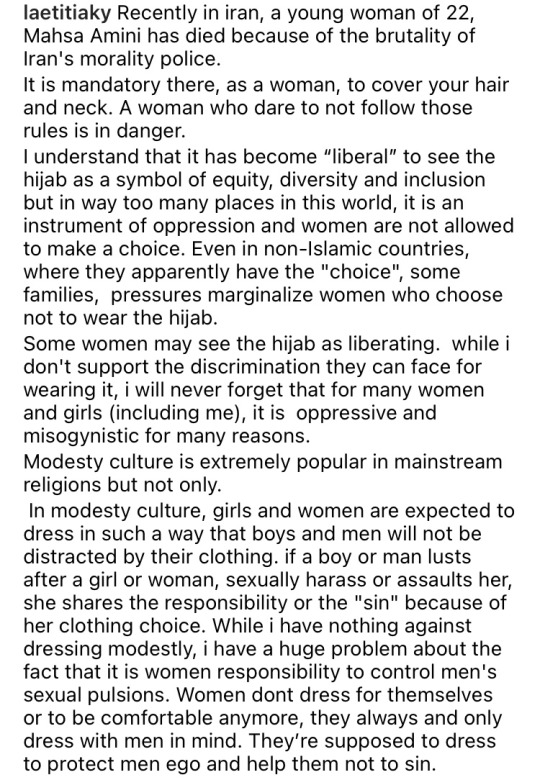
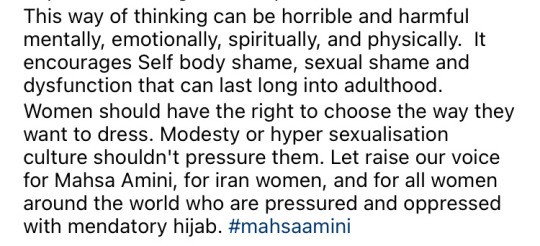
9K notes
·
View notes
Text
saying F U to the regime again and again: a quick update on women vs IR regime
Famous Iranian actresses have been appearing in public without a mandatory hijab. This has been happening since the beginning of the protests. Last month, Kiumars Pourahmad, a well known Iranian screenwriter and director, committed suicide. He had a history of criticizing the regime's political decisions. At his funeral, some of the famous actresses attended without mandatory hijab.

You can see Fateme Motamedarya, Katayoun Riyahi, and Golab Adineh in these pictures from the funeral. Ms. Riyahi was one of the first celebrities who took her hijab off at the start of the Jina (Mahsa) Amini protest and for that she's been the target of IRGC harassment and has been to court.
Last week, in the ceremony of screening of the final episode of Lion's Skin (a persian crime show), actress Pantea Bahram participated without hijab. The manager of Tehran’s Lotus Cinema, where the ceremony was held, was fired for letting her attend without hijab.

Other than prosecution, the regime has blocked these celebrities' bank accounts. Basij and IRGC members have also attacked and harassed these women online and in real life.
Students on university campuses take off their hijabs. There's an installed version of morality police in universities that monitor students' styles. Female students must wear "appropriate" hijab and male students must wear "manly" clothes (one of my guy friends once was asked to go back home and change his shoes because they were red casual loafers. Apparently that's gay!). When you enroll in Iranian universities, the first thing you do is to go to the security office and sign an agreement that says you promise to follow the Islamic dress code. There are posters all over the campus that says things like "hijab is security" "respect the islamic hijab" and "not wearing appropriate hijab (tight short clothes, too much hair, makeup, etc) would result in legal action". So not wearing hijab on campus, where a lot of security cameras are installed and it's easy to identify you, is a big deal.
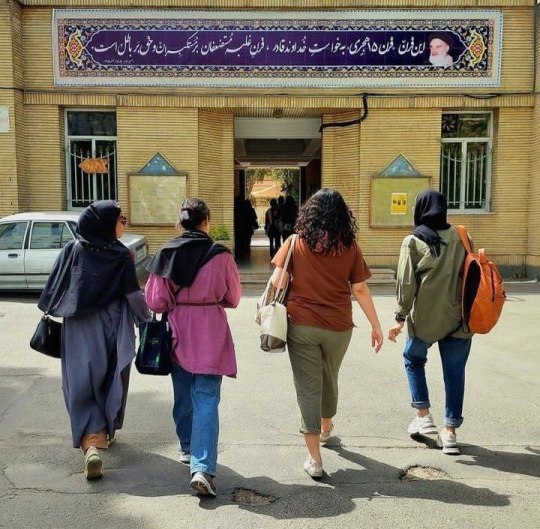

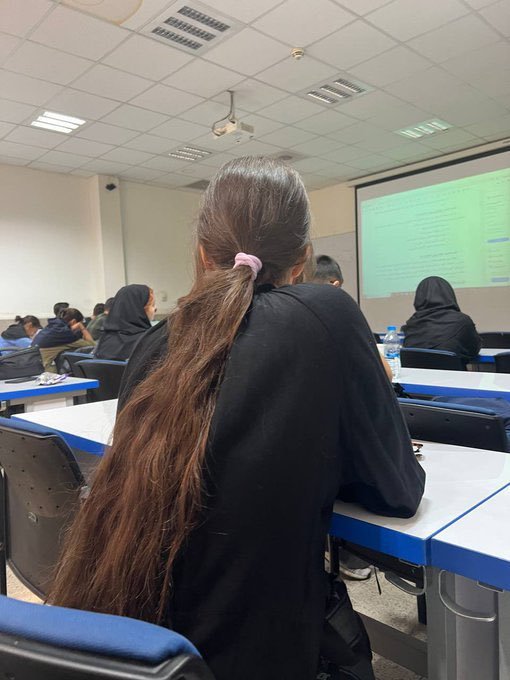

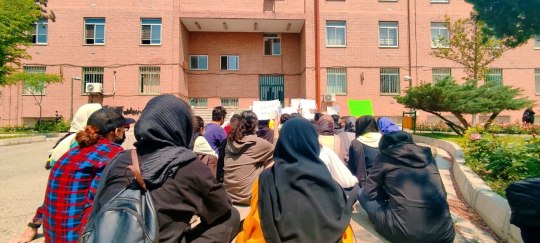


The regime's response to students taking off their hijabs is sending threatening messages to students' phones and increasing the security people. At the entrance of Universities, these security forces check people's clothes and if it's not proper they won't let you in. Some of the students wear the hijab at the entrance and take it off after they're in. They have warned our professors to not let non hijabi students sit in classes too.
One of my favorite trends in Iran now is when guys wear our hijab. These pictures are from universities. Guys wearing hijab make the security mad. This is a great act of solidarity with women against the obligatory hijab.
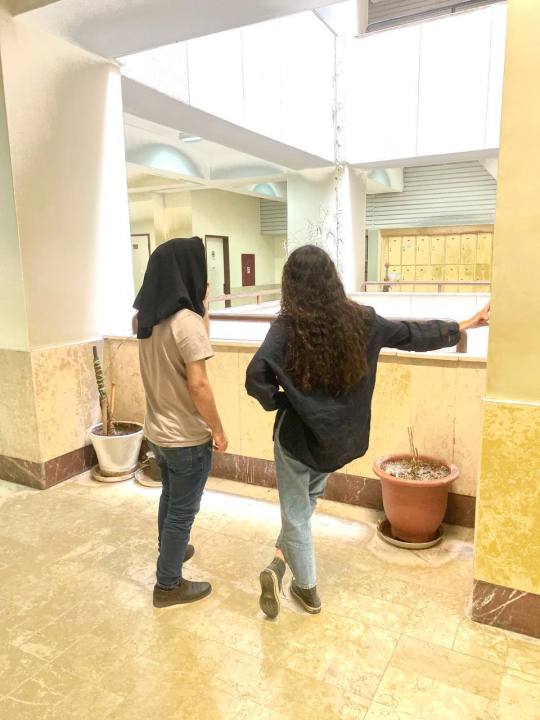
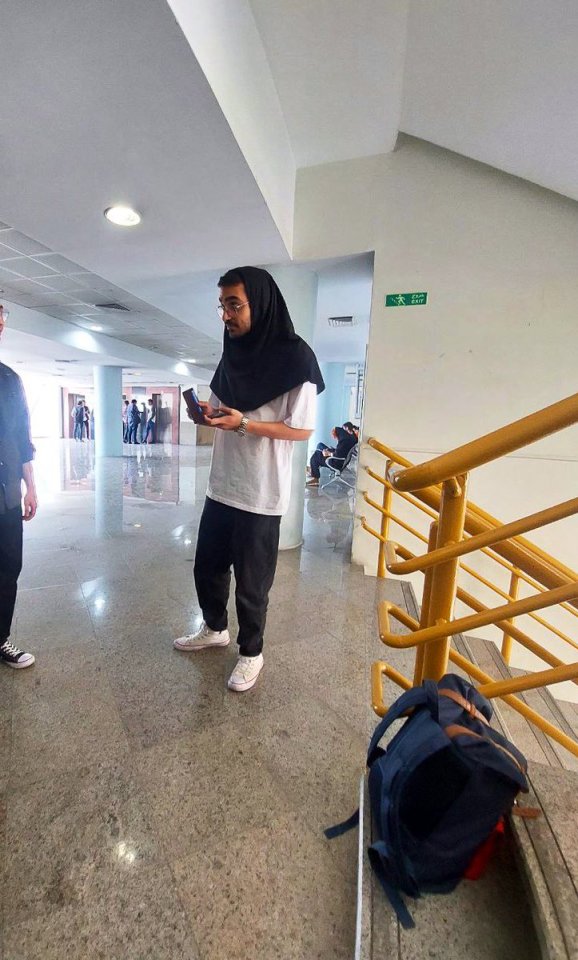
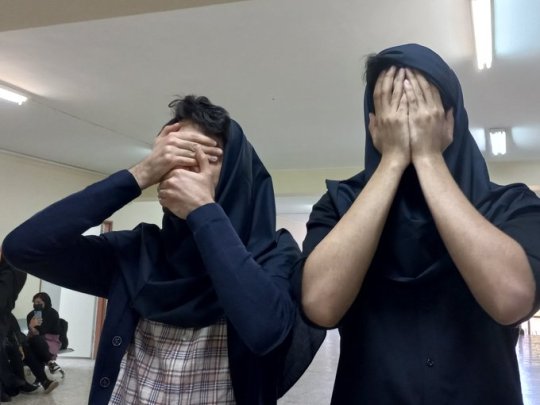
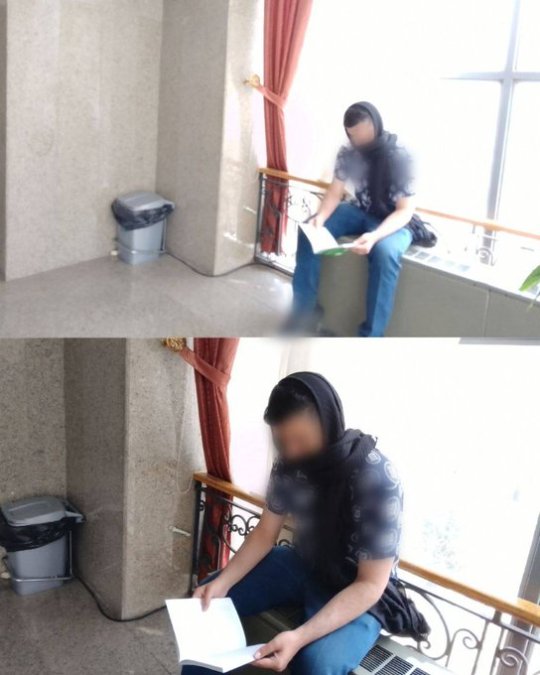
Some men have been doing either this or wearing shorts in public. The former is to ridicule the obligatory dress code and the latter is because wearing shorts in public is forbidden for guys too.
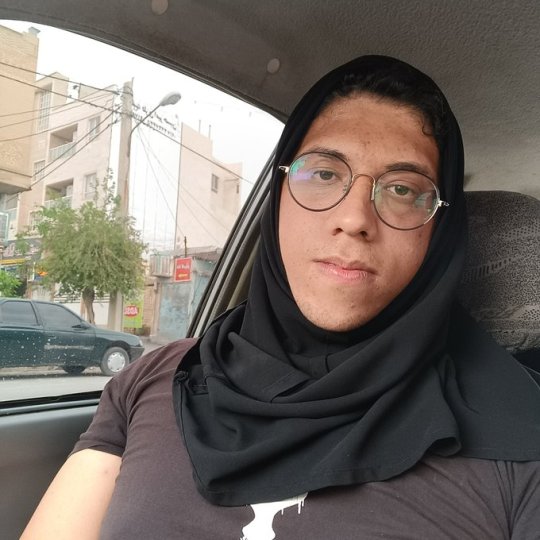

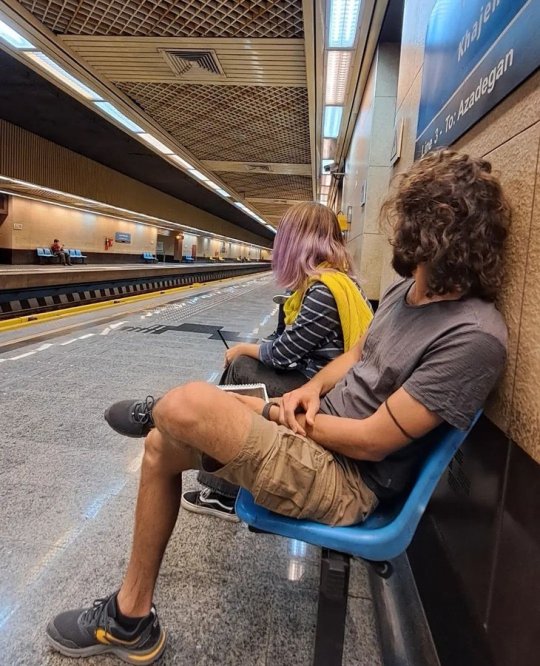

And women not wearing hijab in general. Though hijab is not our only issue, we want a whole new political system, one that is not theocratic or terroristic, hijab is something the regime won't back down from because it's one of their strongest oppressing tools. If they let us win the fight against obligatory hijab, I quote from a regime head, "people keep demanding more changes"!
So to put people against people to enforce the hijab law again, the regime has closed down many businesses (hotels, cafes, malls, bookstores, etc) for welcoming non hijabi female costumers. They have also warned taxi and bus drivers to not let non hijabi women in their vehicles.



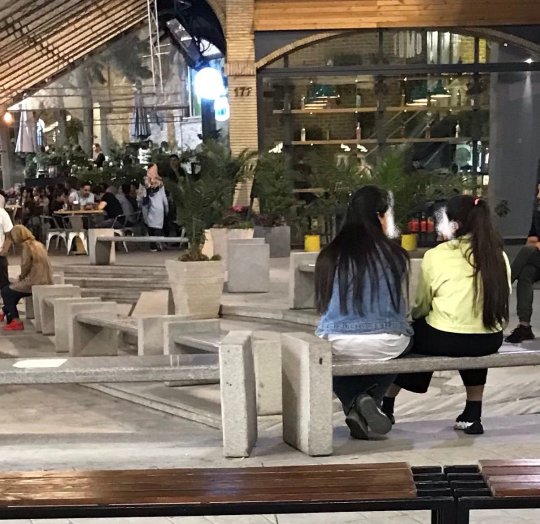
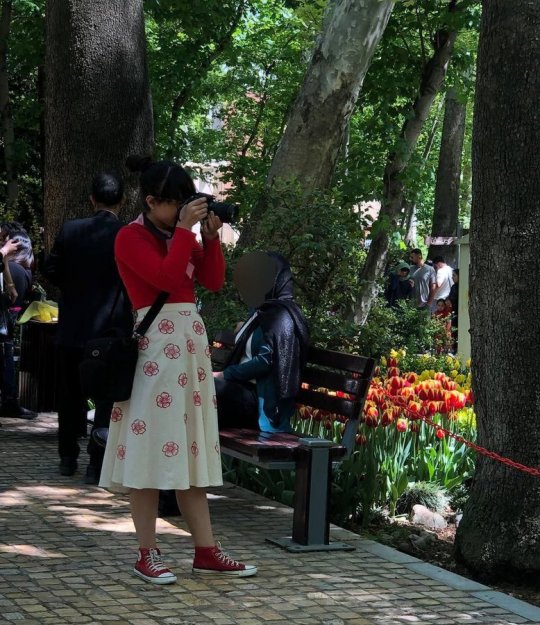
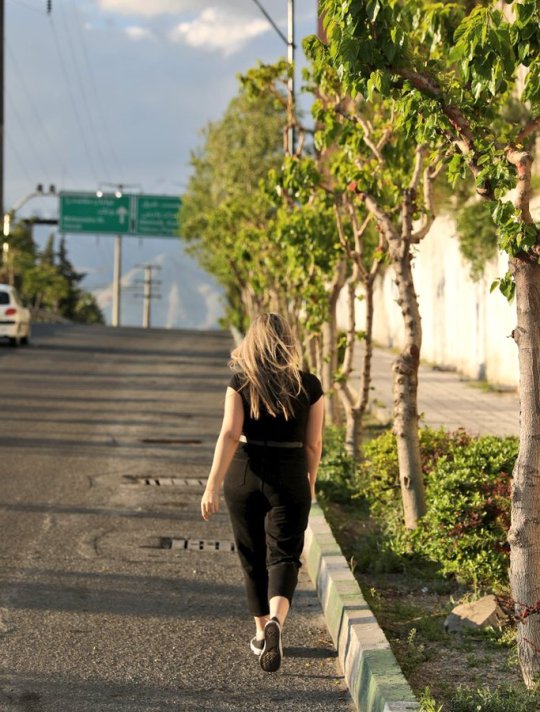


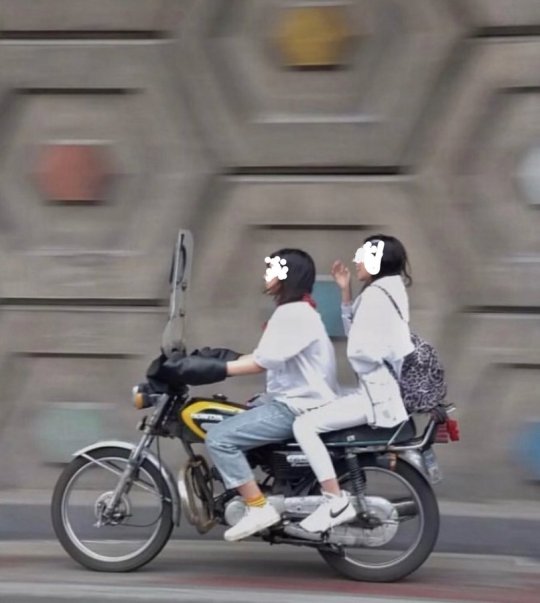
Although not everyone is disobeying the hijab law (some believe in hijab, some don't want to pay the price), the number of women who take the risk and don't wear hijab in Tehran and many other cities is high enough that you feel encouraged to keep doing it.
#iran#iran protests#iran revolution#mahsa amini#jina amini#jin jiyan azadi#women life freedom#politics#human rights#feminism#middle east#women revolution#obligatory hijab#university student#civil disobedience
2K notes
·
View notes
Text
724 notes
·
View notes
Text
We don't draw muslim girls enough
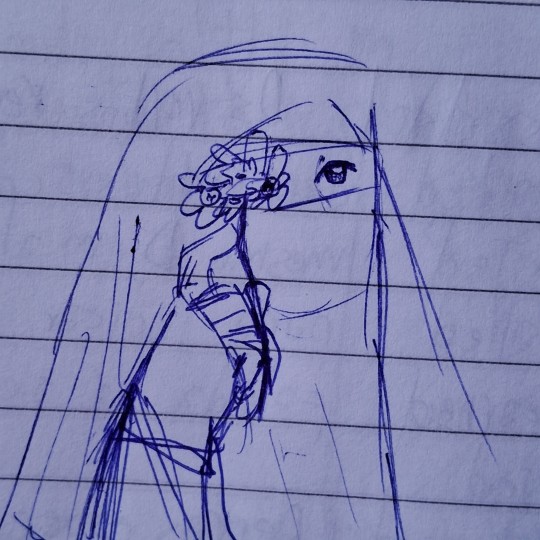

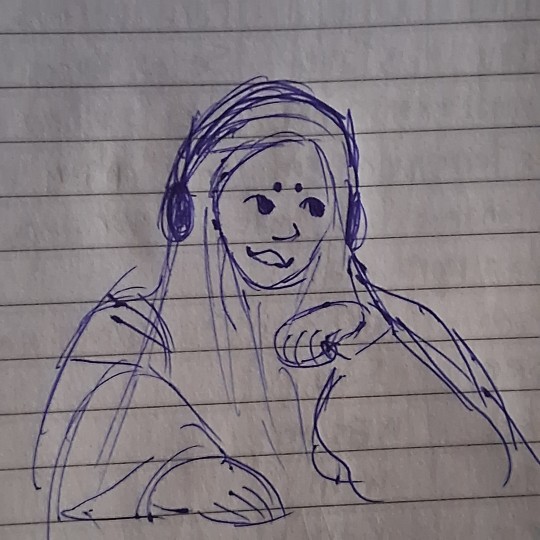



#kv art#muslim#hijab#niqab#khimar#I'm still learning the names#if you know what some of them is called or if I said something wrong I'd be glad to hear you#Ahem women are pretty Ahem muslims are cute Ahem draw them more Ahem#thank you Yo for bringing more diversity to my art and life 💖#art#artists on tumblr#oh my God I don't know how to tag normal art#traditional art#doodlies
260 notes
·
View notes
Text


21 notes
·
View notes
Text
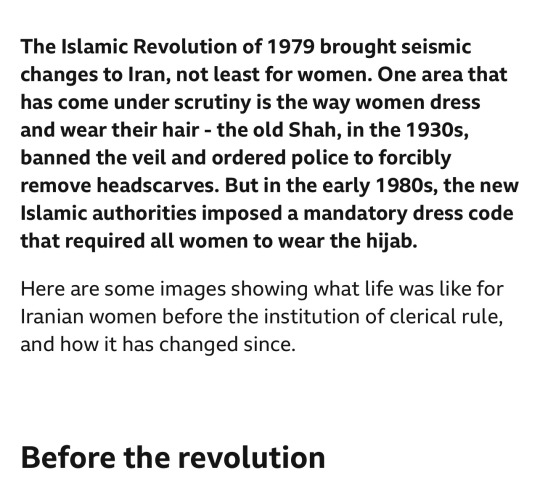

Studying at Tehran University in 1977: While many women were already in higher education at the time of the revolution, the subsequent years saw a marked increase in the number attending university. This was in part because the authorities managed to convince conservative families living in rural areas to allow their daughters to study away from home.
"They tried to stop women from attending university, but there was such a backlash they had to allow them to return," says Baroness Haleh Afshar, a professor of women's studies at the University of York who grew up in Iran in the 1960s.
"Some educated people left Iran, and the authorities realised in order to run the country they needed to educate both men and women."
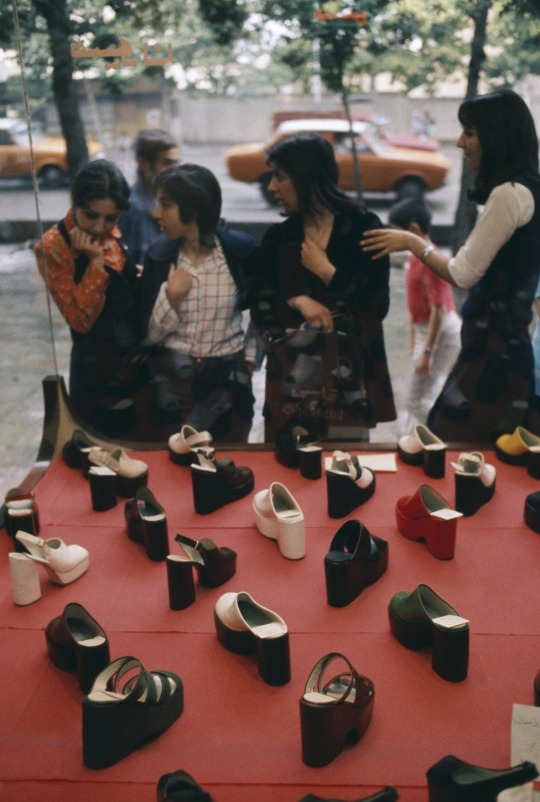
Window shopping in Tehran in 1976: Before the revolution, the hijab was already widely worn but many women also chose to don Western-style clothes, including tight-fitting jeans, miniskirts and short-sleeved tops. "The shoes haven't changed - and the passion for shoes is in all of us! Women in Iran are no different from women the world over, and going shopping is just a means for women to get away from every day stress," says Prof Afshar.
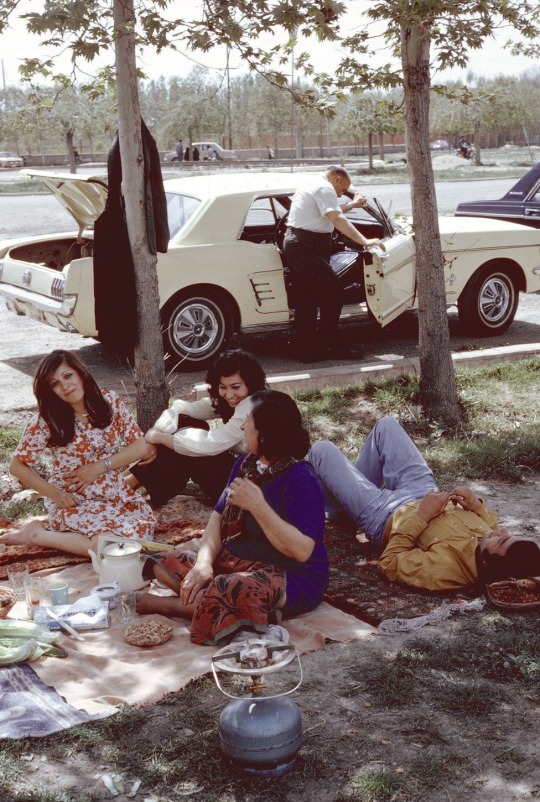
Friday picnic in Tehran in 1976: Families and friends tend to get together on Fridays, which are weekend days in Iran. "Picnics are an important part of Iranian culture and are very popular amongst the middle classes. This has not changed since the revolution. The difference is, nowadays, men and women sitting together are much more self-aware and show more restraint in their interactions," says Prof Afshar.
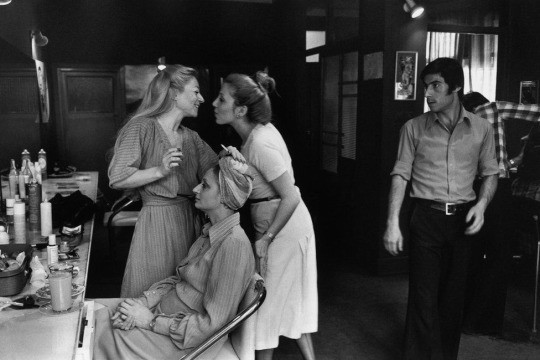
Hair salon in Tehran in 1977: "This is a scene you would no longer expect to see in Iran - but even after the Islamic Revolution, hairdressers continued to exist," says Prof Afshar. "Nowadays you wouldn't see a man inside the hairdressers - and women would know to cover up their hair as soon as they walked out the door. Some people may also operate secret salons in their own homes where men and women can mix."
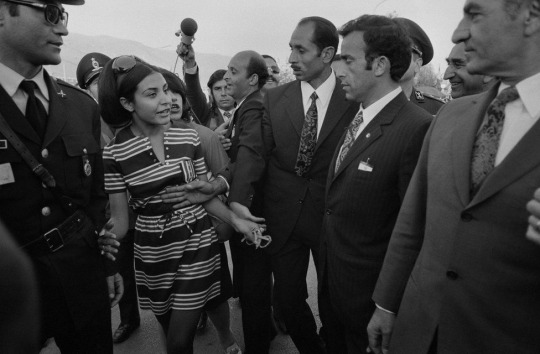
Bodyguards surround the shah in 1971: A young woman approaches Shah Mohammad Reza Pahlavi (far right) at a huge party marking the 2,500th anniversary of the Persian monarchy - the extravagance of the event was widely condemned by his left-wing and clerical opponents. "By this time, the shah was already very much disliked and some believe this image of excess and indulgence may have contributed to events leading up to the revolution eight years later," Prof Afshar explains.

Walking down a snowy street in Tehran in 1976: "You cannot stop women walking in the streets of Iran, but you wouldn't see this today - her earrings and make up so clearly on show," Prof Afshar says. "There is this concept of 'decency' in Iran - so nowadays women walking in the streets are likely to wear a coat down to her knees and a scarf."
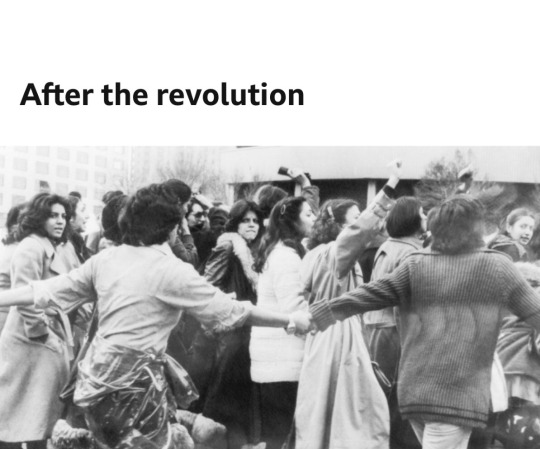
Women rally against the hijab in 1979: Soon after taking power, Iran's new Supreme Leader Ayatollah Ruhollah Khomeini decreed that all women had to wear the veil - regardless of religion or nationality. On 8 March - International Women's Day - thousands of women from all walks of life turned out to protest against the law.
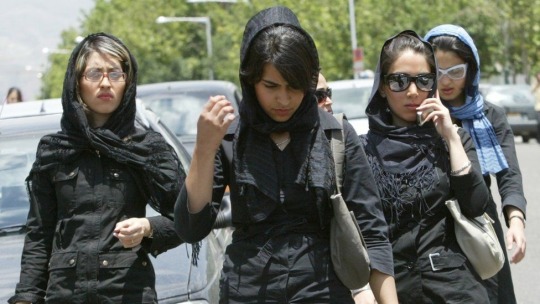
Walking in Tehran in 2005: Not all women in Iran opt to wear the black chador, a cloak that covers the body from head to toe and only leaves the face exposed. Many prefer to wear loosely fitted headscarves and coats. "The real question is how far back do you push your scarf? Women have their own small acts of resistance and often try as far as possible to push their scarves back," says Prof Afshar.

Watching football from a Tehran shopping centre in 2008: Though women were never officially banned from watching men's football matches in Iran, they are often refused entry to stadiums and some of those who have tried have been detained. Before the revolution, women were allowed to attend sporting events.
SEPTEMBER 2022: Protests, after the Morality Police beat, arrested and then murdered Mahsa Amini — for the “crime” of improperly wearing her hijab (source) (source)
#mahsa amini#jini emini#jini amini#iran#hijab#morality police#politics#islamic revolution#tehran#protests#bodily autonomy#womens rights#feminism#womanism#war on women#patriarchy#jhina emini
4K notes
·
View notes
Text

Celebrating International Women's day in Iran
#israel#secular-jew#jewish#judaism#israeli#jerusalem#diaspora#secular jew#secularjew#islam#iran#iranian#hamas#hezbollah#islamic jihad#terrrorist state#misogynist#hijab#burqa#veiled#veiled muslimah#niqab#fully veiled#freedom#womens day#international women's day
293 notes
·
View notes
Text
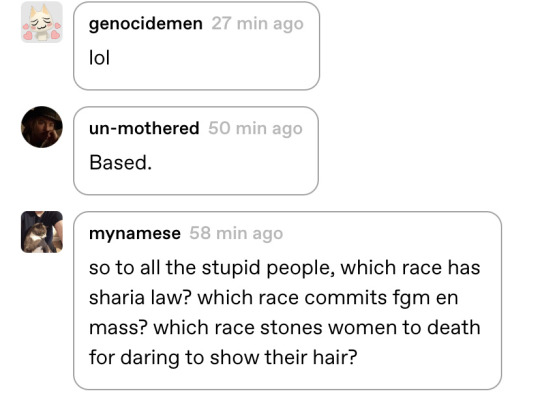
can’t wait when white supremacists find out there’s white muslims and that christian & jewish women in africa experience fgm too
#when they pretend to care about these issues but don’t even know the basics on it#like u really care about fgm so deeply but never bothered to find out it’s not actually limited to a certain religion#they care so much about mandatory hijab but not enough to know that getting stoned to death for not wearing a hijab#is not a common practice whatsoever#move to kosovo if u think religion is race. have fun with the white men there#or move to russia since u think it’s great for women as long as ur among white men
161 notes
·
View notes
